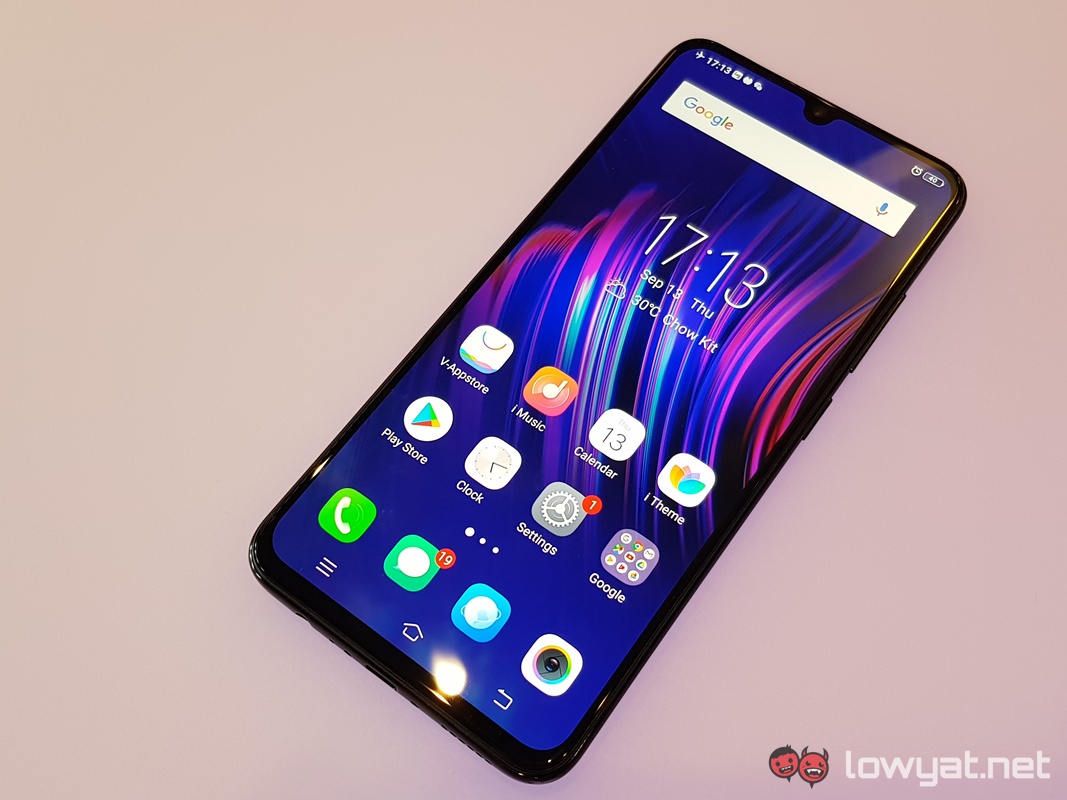With the Vivo V11 and V11i now officially launched in the market, the mid-range smartphone market segment is once again expanded with the addition these two phones. On that note, we managed to catch a little bit of quality time with the V11 in order to see what the fuss is all about.
We’ll start by addressing the one feature that not many mid-range smartphones have: an in-display fingerprint sensor. Its presence signifies the possibility that Vivo plans on making the technology a staple with all its future devices, moving forward.
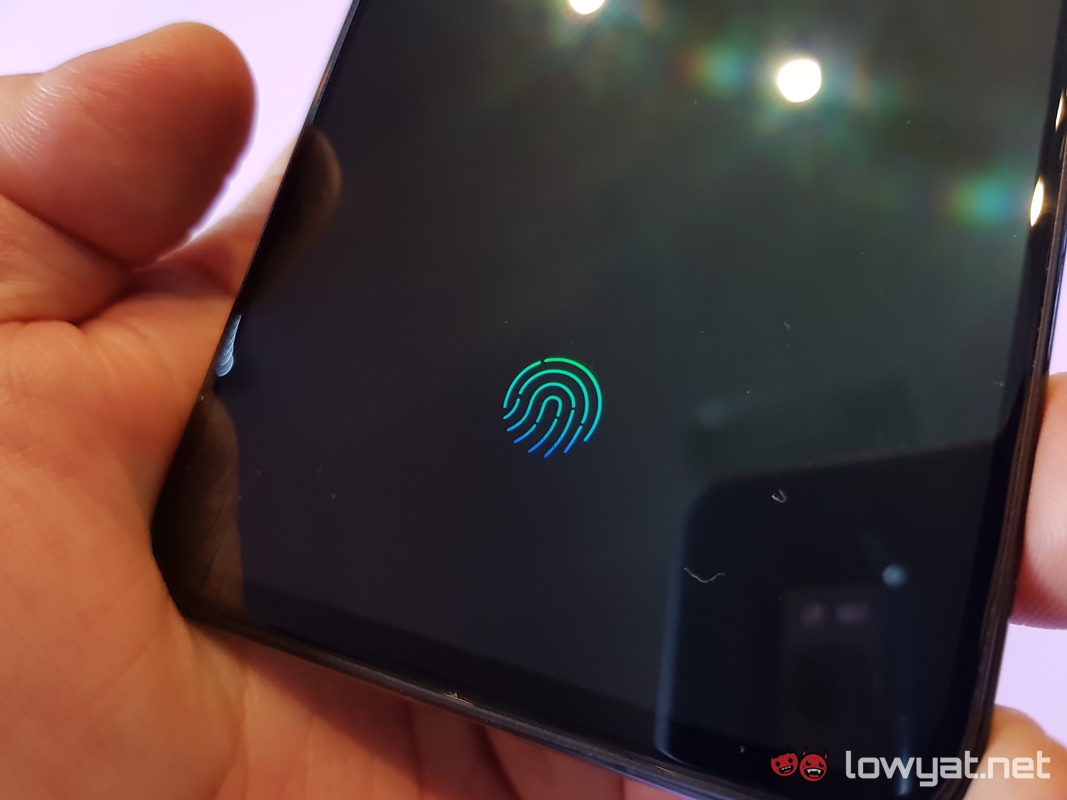
Compared to the conventional fingerprint sensor, registering a fingerprint on the in-display sensor requires a tad bit more patience. The fingerprint recognition is relatively snappy and spot on, but if compared to fingerprint sensors on other devices, it actually felt a little sluggish.
Specs-wise, the V11 comes loaded with a Qualcomm Snapdragon 660 SoC that is accompanied by an AI processor, 6GB RAM, 128GB of expandable storage, and a 3400mAh battery with what Vivo describes as Dual-Engine fast charging. The display is an 19.5:9 aspect ratio Full HD+ Super AMOLED screen that measures in at 6.41-inches. Yes, it’s a notched display, but mercifully, it’s only a waterdrop notch, and so doesn’t take up nearly half of the display’s top bezel.
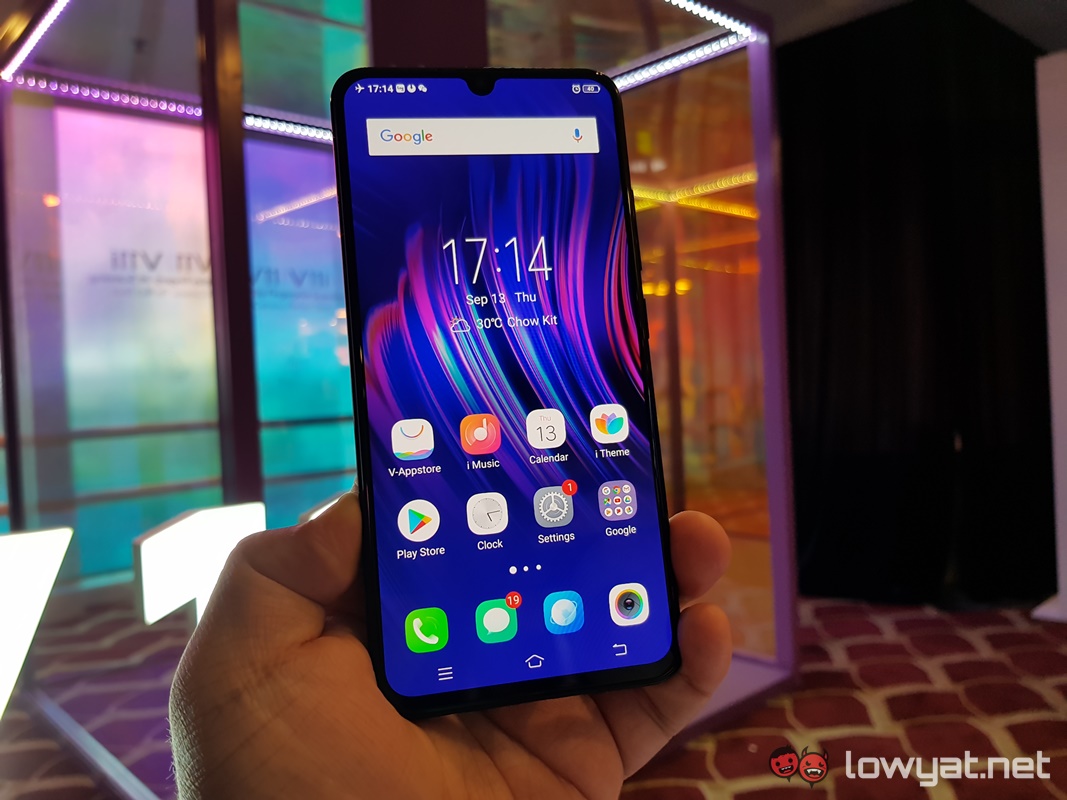
In terms of connectivity, the V11 sadly doesn’t sport a USB Type-C port. Instead, Vivo has chosen to fit the phone with a micro USB port. To be frank, we find it a bit odd that it wouldn’t use the newer USB Type-C connection, especially since – making comparisons once again – other mid-range smartphones have adopted the port as their current standard.
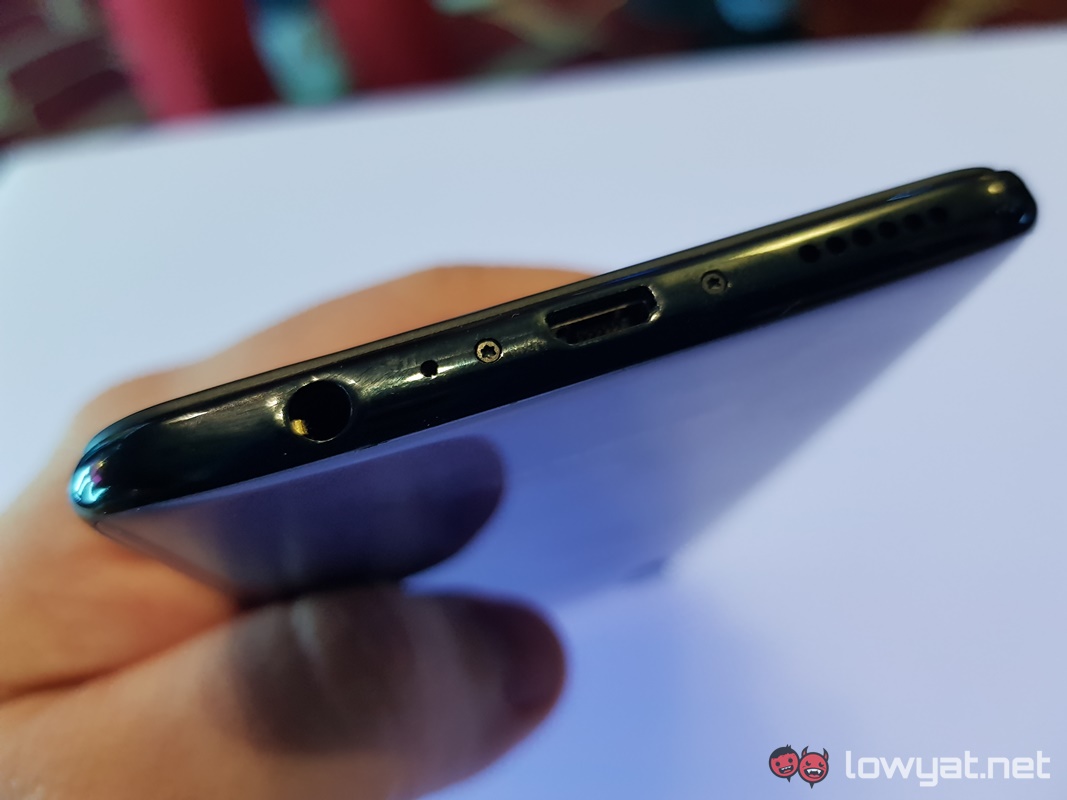
Aesthetically, the V11 seems to borrow the same design language found on its bigger brother, the Vivo Nex. It definitely looks good with that glossy back. But like all glossy back designs, the V11 is unavoidably a fingerprint magnet.
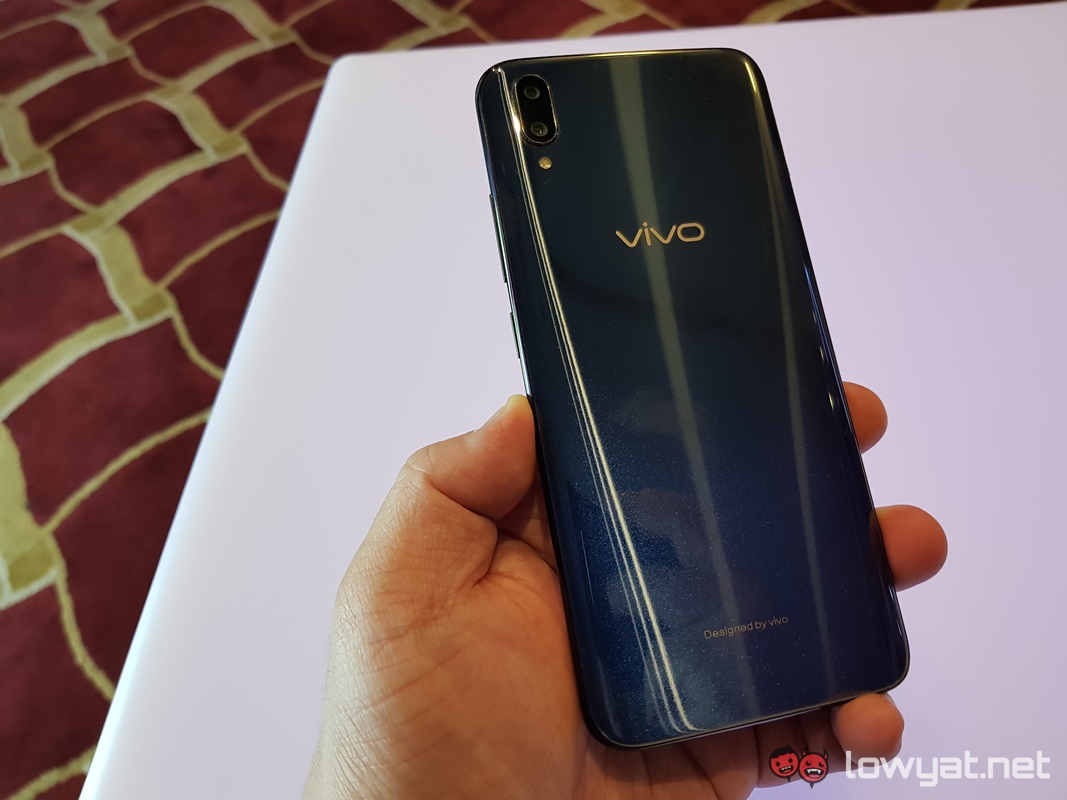
In terms of performance, the phone’s UI was zippy and really responsive. Apps launch immediately when activated, and cycling through multiple open apps is just as fast. Having said that, the V11 we tested was just a demo unit, so it’s hard to say if a consumer unit will be able to perform just as fast when stacked with personal apps.

Regarding its cameras, the phone’s main camera array uses a dual 12MP + 5MP setup. While we were unable to take the phone outside of the venue to take some proper images, we did manage to get a sample image with it indoors. The end result of the image is impressive, especially since the venue was quite poorly lit. Overall, the picture still looks bright, with almost all of the details retained. Granted, there was a relative amount of noise, it’s actually surprising that the image managed to turn out the way it did.
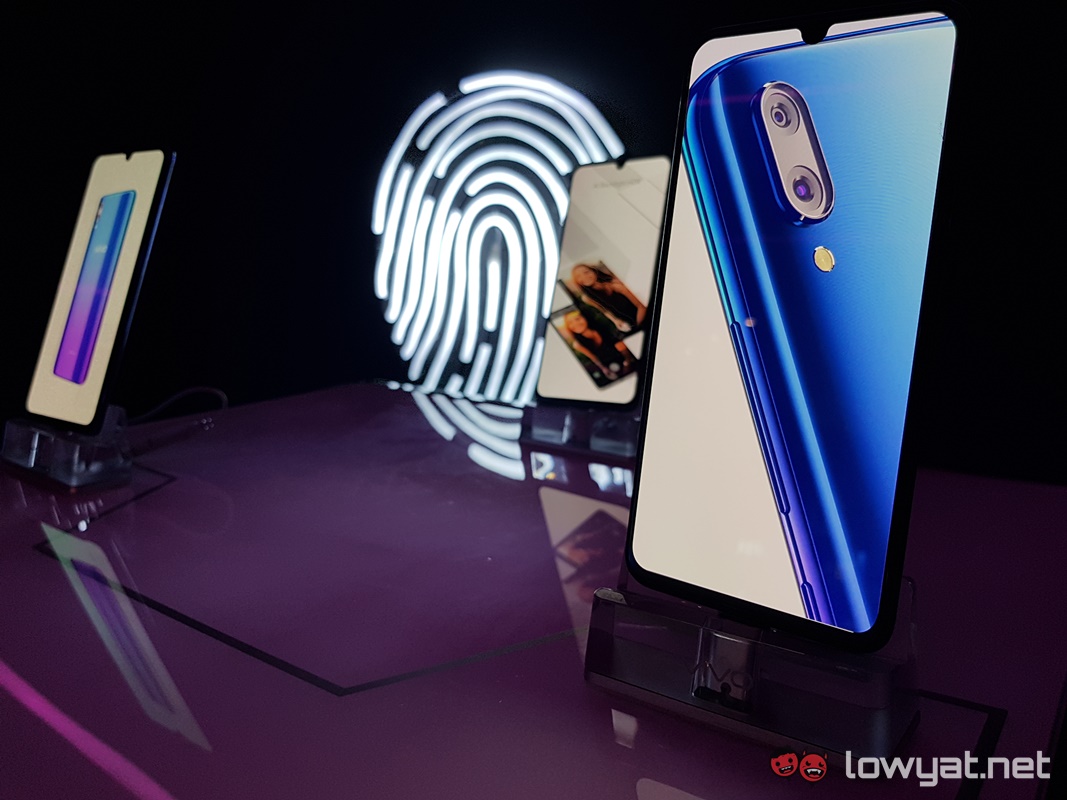
All things considered, the Vivo V11 is a pretty attractive phone. The phone will be made available from 15 September 2018 onwards; just a week before the V11i. In the mean time, Vivo has yet to provide us with a unit, but it goes without saying that we would like to put the phone through its paces, along with an in-depth review in the near future.
Follow us on Instagram, Facebook, Twitter or Telegram for more updates and breaking news.


